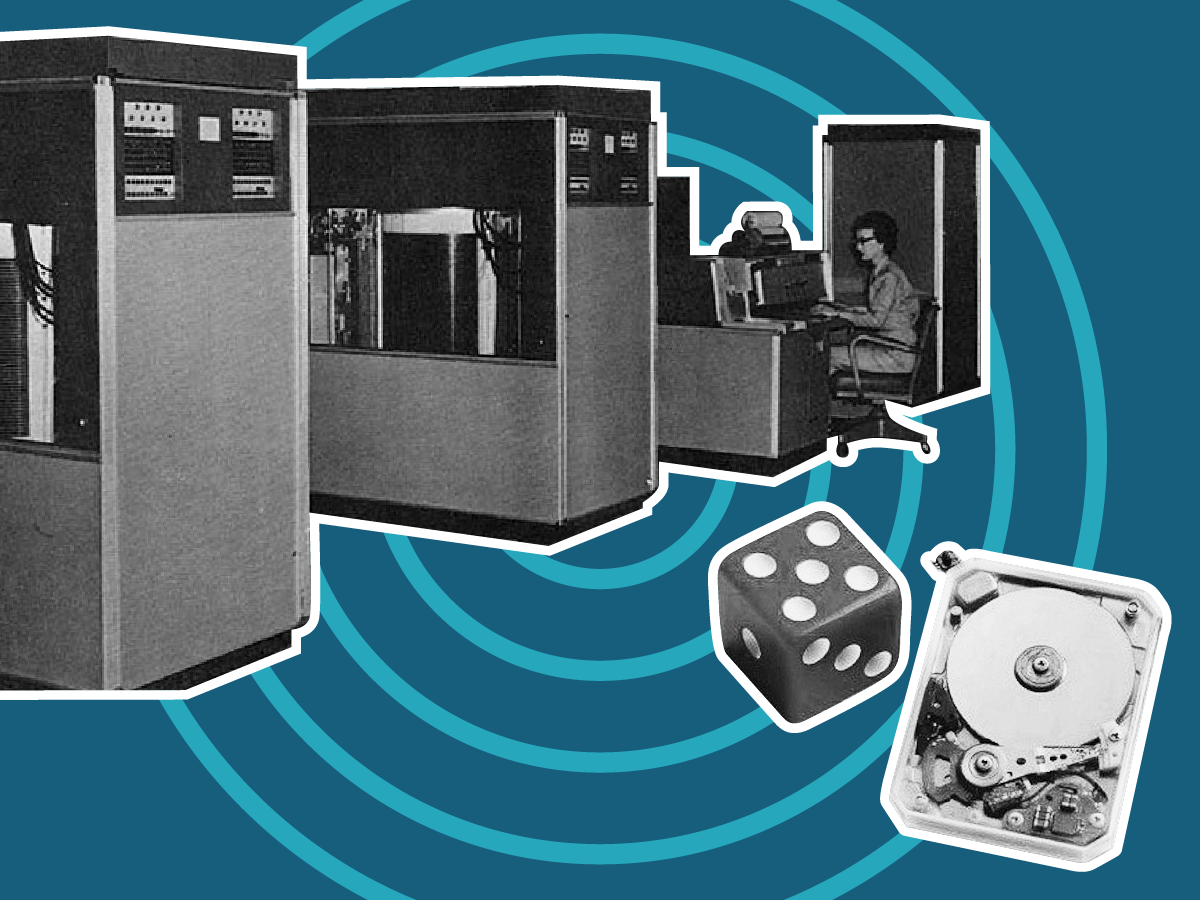When IBM rolled out its first hard drive in 1956, the computing giant literally had to roll it out.
Though its storage capabilities were puny, the 5-megabyte drive was the size of a grand piano and weighed over a ton.
Thankfully, the next six decades were marked by rapid innovation.
Here’s a look back at how hard drives have climbed to new heights in storage while also shrinking like crazy.
1956 – IBM shipped the first hard drive, its 5MB RAMAC 305. By today’s standards it was unfathomably huge. Each megabyte cost $10,000, or $88,000 in today’s dollars.

Foto: source Wikimedia Commons
1963 – IBM unveiled the first removable hard drive, the 1311, which bore an uncanny resemblance to a record player. It came with 2.6MB of storage.

Foto: source Wikimedia Commons
1973 – IBM released the boldly-colored 3340, which could hold up to 70MB or work with another IBM processor to create a composite 280MB drive.

Foto: source IBM
1979 – IBM debuted the 3370, a 571MB drive the size of a modern-day photocopier. It used seven 14-inch “platters” to hold data.

Foto: source IBM
1980 – IBM introduced the first 1GB hard drive. With its complete casing, it was the size of a refrigerator, weighed about 550 pounds, and cost $40,000.

Foto: source Wikimedia Commons
1980 – Seagate introduced a competing drive to IBM. By this point, the 5MB had shrunk in size to just a 5.25-inch hard disk. It cost $4,300 (in today’s dollars).

Foto: source Wikimedia Commons
1983 – Rodime released the first 3.5-inch hard disk, the RO352, setting a standard for desktop computer drives. It held 10MB at a cost of $1,895, or almost $4,500 today.

Foto: source Wikimedia Commons
1988 – Prairie Tek released the 220. The 2.5-inch drive was created for the budding laptop market and is still the standard size used in notebooks today. Its two platters can store 20MB.

Foto: source Wikimedia Commons
1992 – Hewlett-Packard pushed the limits of minuscule drives with the C3013A Kitty Hawk drive. It used two 1.3-inch platters to store 2.1GB.

Foto: source Nixie Bunny
1998 – IBM’s Microdrive was released to the public, setting a new benchmark for the smallest hard drive to date. Its 340MB of storage fit on a single 1-inch platter. (Remember that 1956 IBM behemoth?)

Foto: source Wikimedia Commons
2004 – Not to be outdone, Toshiba released a 0.85-inch hard drive that could store 2GB on a single platter.

Foto: source PC World
2006 – Commercial storage began to ramp up with Seagate’s release of the Barracuda 7200.10, the largest drive to date at 750GB.

Foto: source Seagate
2007 – Moving into the next order of magnitude, Hitachi GST released the first 1 terabyte hard drive, the Deskstar 7K1000. It could hold 200,000 times as much as IBM’s original drive.

Foto: source Hitachi
2011 – Companies vied to outdo each other for the next several years, with Seagate eventually releasing the first 4TB hard drive, the Barracuda XT.

Foto: source Seagate
2013 – HGST announced a helium-filled 6 TB hard disk drive. The device made for less drag and faster processing because helium is lighter than air, but increased manufacturing costs.

Foto: source HGST
2014 – The very next year, Seagate introduced 6TB hard drives that don’t use helium. They were cheaper, but used more power to operate at higher temperatures.

Foto: source Seagate
2015 – Finally last year, HGST outdid itself to pass the 10TB mark with its Ultrastar Archive Ha10 SMR. It was a world first.

Foto: source HGST
2016 – Seagate unveiled the monstrous 60TB SSD, which is not yet available for purchase. Accounting for inflation, it’ll cost $400,000 less than IBM’s first 5MB drive, but offer 12,000,000 times the storage capacity.

Foto: source Seagate

